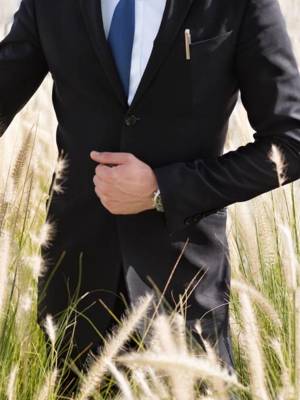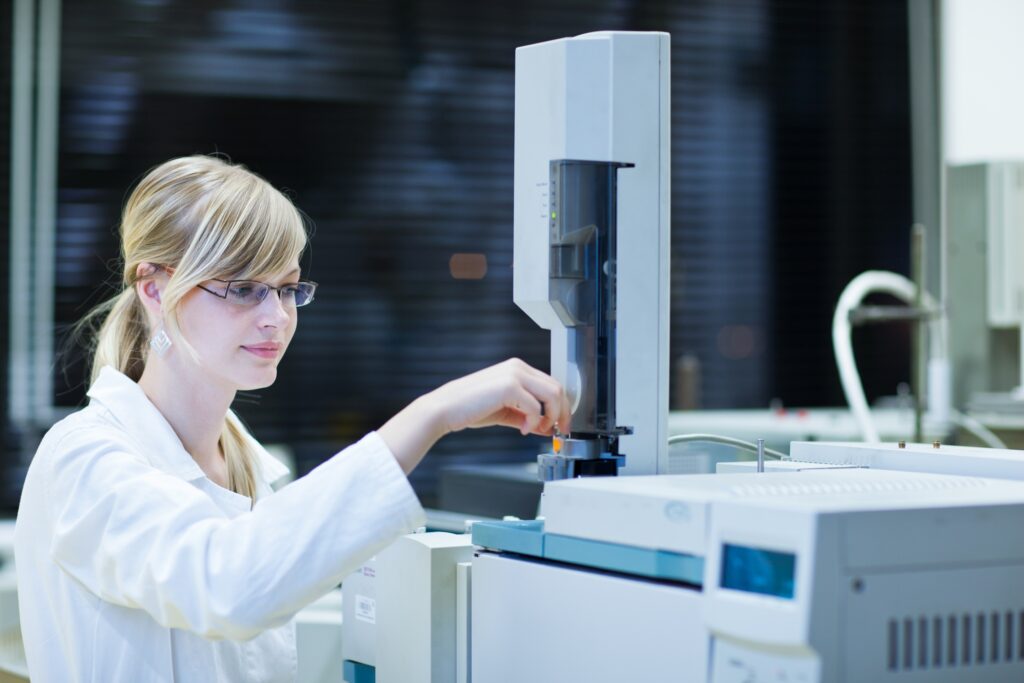Добро пожаловать

Забыли пароль?
Не бесспокойтесь! Укажите свой емейл при регистрации и мы отправим инструкцию по восстановлению пароля

Готово!
Поздравляем, регистрация практически завершена.
Ожидайте на почту письмо с подтверждением электронной почты, пока вы ожидаете мы подберем для вас персонального менеджера.
Если возникли вопросы, всегда ,будем рады вам помочь:
+38 (044) 240-04-20
+38 (044) 240-04-20

TESTING LABORATORY
Premium Quality Products Under the FACTORIA-AGRO Brand
The exceptional quality of FACTORIA-AGRO products results from our meticulous approach to manufacturing, which occurs under optimal sanitary conditions with continuous monitoring of quality parameters.
To perform these tasks, FACTORIA-AGRO's quality department staff:
In-House Testing Laboratory
FACTORIA-AGRO Ltd. operates an independent testing laboratory on its premises. Our laboratory is equipped with modern analytical instruments and follows high-quality standards to ensure reliable testing results. We conduct a wide range of analyses to monitor product quality and compliance with industry requirements.

Research conducted
– Appearance – Visual assessment of uniformity, texture, and overall condition.
– Smell, Taste, and Color – Verification of product aroma, flavor profile, and color consistency.
– Transparency – Evaluation of clarity in liquid-based products (if applicable).
– Pest Infestation – Examination for the presence of live pests that may compromise product quality.
– Pest Contamination – Detection of any residues or traces left by pests, ensuring product safety.
– Foreign Matter – Inspection for unwanted particles such as husks, dust, or other impurities.
– Moisture & Clumping – Checking for excessive moisture levels that may cause clumping or affect product texture.
– Moisture and Volatile Substances – Determination of the product’s moisture content and its impact on shelf life and stability.
– Net Weight – Verification of the actual product weight to ensure accuracy in packaging and compliance with declared values.
– Grinding Size – Measurement of particle size to guarantee uniformity and consistency in processed materials.
– Density – Assessment of bulk density for optimal storage, transport, and product formulation.
– Non-Fatty Impurities – Detection of foreign particles that do not contribute to oil or fat content.
– Insoluble Impurities – Identification of substances that do not dissolve in standard solvent tests.
– Ash Content (Including Acid-Insoluble Ash) – Determination of the total mineral content and the portion that remains insoluble in hydrochloric acid.
– Fat Content – Quantification of the total fat mass fraction to ensure consistency in oilseed-based products.
– Fiber Content – Measurement of fiber levels, which influence texture, processing behavior, and nutritional properties.
– Metallic and Magnetic Impurities – Screening for metallic contaminants to ensure product purity and safety.
– Foreign Matter and Impurities – Identification of non-grain contaminants, including foreign seeds, mineral particles, and other unwanted materials.
– Grain Impurities – Analysis of defective or unwanted grains present in the product.
– Oil Impurities – Determination of unwanted oil-based contaminants that may affect product quality.
– Dark Inclusions – Evaluation of dark particles or discoloration that could indicate product degradation.
– Unsaponified Substances – Measurement of substances that do not undergo saponification, impacting oil composition.
– Phosphorus Content – Determination of phosphorus levels, including its presence in lecithin compounds.
– Acid Number – Determines the free fatty acid content, which is essential for assessing product freshness and stability. A high acid number may indicate degradation or oxidation.
– Protein Content – Measures the mass fraction of proteins in raw materials, crucial for nutritional value assessment and product formulation.
– Peroxide Value – Evaluates the level of peroxides in oils and fats, an indicator of oxidation and potential rancidity. This parameter is essential for determining product shelf life.
– Iodine Value – Measures the degree of unsaturation in fats and oils, providing insight into product stability and drying properties. This is particularly important for oilseeds and processed oils.
– Refractive Index – Measures the bending of light as it passes through a sample, providing insight into product purity, consistency, and potential adulteration.
– Moisture Content – Helps assess the water content in oils, extracts, and concentrates, which affects stability and shelf life.
– Oil and Fat Quality – Used to determine the purity and composition of vegetable oils and fats, ensuring compliance with industry standards.
– Concentration of Dissolved Substances – Evaluates the presence of dissolved solids in liquid-based raw materials, extracts, or emulsions.
– Product Freshness Indicators – Assesses potential degradation of oils, ensuring they maintain their expected chemical properties.
– Color Intensity and Purity – Determines the consistency of product coloration, ensuring uniformity in appearance and compliance with quality standards.
– Oxidation Stability – Evaluates the level of oxidation in oils and fats by measuring absorbance at specific wavelengths, helping predict shelf life and storage conditions.
– Fatty Acid Composition – Identifies and quantifies different fatty acids in oils and fat-containing products, ensuring compliance with nutritional and industrial requirements.
– Peroxide Value Estimation – Detects primary oxidation products in oils, indicating potential rancidity or degradation.
– Fatty Acid Composition Analysis – Determines the full profile of fatty acids in vegetable oils, including saturated, monounsaturated, and polyunsaturated fatty acids.
– Essential Oil Composition Analysis – Identifies and quantifies volatile aromatic compounds in essential oils, ensuring consistency in purity, aroma, and bioactive properties.
– Appearance – Visual assessment of uniformity, texture, and overall condition.
– Smell, Taste, and Color – Verification of product aroma, flavor profile, and color consistency.
– Transparency – Evaluation of clarity in liquid-based products (if applicable).
– Pest Infestation – Examination for the presence of live pests that may compromise product quality.
– Pest Contamination – Detection of any residues or traces left by pests, ensuring product safety.
– Foreign Matter – Inspection for unwanted particles such as husks, dust, or other impurities.
– Moisture & Clumping – Checking for excessive moisture levels that may cause clumping or affect product texture.
– Moisture and Volatile Substances – Determination of the product’s moisture content and its impact on shelf life and stability.
– Net Weight – Verification of the actual product weight to ensure accuracy in packaging and compliance with declared values.
– Grinding Size – Measurement of particle size to guarantee uniformity and consistency in processed materials.
– Density – Assessment of bulk density for optimal storage, transport, and product formulation.
– Non-Fatty Impurities – Detection of foreign particles that do not contribute to oil or fat content.
– Insoluble Impurities – Identification of substances that do not dissolve in standard solvent tests.
– Ash Content (Including Acid-Insoluble Ash) – Determination of the total mineral content and the portion that remains insoluble in hydrochloric acid.
– Fat Content – Quantification of the total fat mass fraction to ensure consistency in oilseed-based products.
– Fiber Content – Measurement of fiber levels, which influence texture, processing behavior, and nutritional properties.
– Metallic and Magnetic Impurities – Screening for metallic contaminants to ensure product purity and safety.
– Foreign Matter and Impurities – Identification of non-grain contaminants, including foreign seeds, mineral particles, and other unwanted materials.
– Grain Impurities – Analysis of defective or unwanted grains present in the product.
– Oil Impurities – Determination of unwanted oil-based contaminants that may affect product quality.
– Dark Inclusions – Evaluation of dark particles or discoloration that could indicate product degradation.
– Unsaponified Substances – Measurement of substances that do not undergo saponification, impacting oil composition.
– Phosphorus Content – Determination of phosphorus levels, including its presence in lecithin compounds.
– Acid Number – Determines the free fatty acid content, which is essential for assessing product freshness and stability. A high acid number may indicate degradation or oxidation.
– Protein Content – Measures the mass fraction of proteins in raw materials, crucial for nutritional value assessment and product formulation.
– Peroxide Value – Evaluates the level of peroxides in oils and fats, an indicator of oxidation and potential rancidity. This parameter is essential for determining product shelf life.
– Iodine Value – Measures the degree of unsaturation in fats and oils, providing insight into product stability and drying properties. This is particularly important for oilseeds and processed oils.
– Refractive Index – Measures the bending of light as it passes through a sample, providing insight into product purity, consistency, and potential adulteration.
– Moisture Content – Helps assess the water content in oils, extracts, and concentrates, which affects stability and shelf life.
– Oil and Fat Quality – Used to determine the purity and composition of vegetable oils and fats, ensuring compliance with industry standards.
– Concentration of Dissolved Substances – Evaluates the presence of dissolved solids in liquid-based raw materials, extracts, or emulsions.
– Product Freshness Indicators – Assesses potential degradation of oils, ensuring they maintain their expected chemical properties.
– Color Intensity and Purity – Determines the consistency of product coloration, ensuring uniformity in appearance and compliance with quality standards.
– Oxidation Stability – Evaluates the level of oxidation in oils and fats by measuring absorbance at specific wavelengths, helping predict shelf life and storage conditions.
– Fatty Acid Composition – Identifies and quantifies different fatty acids in oils and fat-containing products, ensuring compliance with nutritional and industrial requirements.
– Peroxide Value Estimation – Detects primary oxidation products in oils, indicating potential rancidity or degradation.
– Fatty Acid Composition Analysis – Determines the full profile of fatty acids in vegetable oils, including saturated, monounsaturated, and polyunsaturated fatty acids.
– Essential Oil Composition Analysis – Identifies and quantifies volatile aromatic compounds in essential oils, ensuring consistency in purity, aroma, and bioactive properties.
Highly qualified staff
Great practical experience
Leading experts of the laboratory have a high level of expertise and extensive practical experience in the area of oilseed and grain crop research, as well as the products derived after their processing, which is confirmed by annual recertification of their knowledge.
Continuous training
They constantly improve their expertise and skills through training at the enterprises – producers of laboratory equipment, and through participation in the interlaboratory round robin tests.
Internal quality control
In order to ensure the accuracy and quality of laboratory tests in the measuring laboratory of FACTORIA-AGRO Ltd quality of research checks are carried out routinely.

